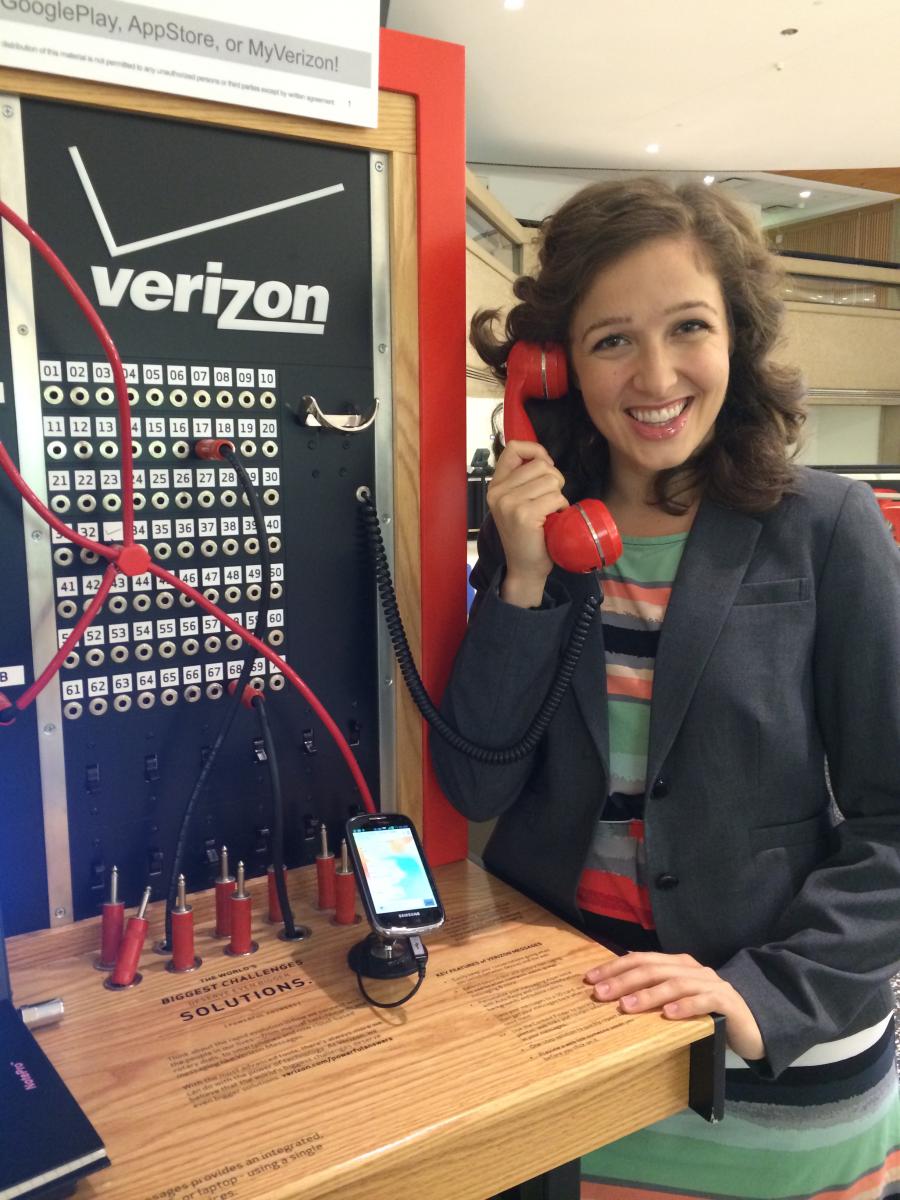 By: Susannah Harris, 2014 Climate Corps Fellow
By: Susannah Harris, 2014 Climate Corps Fellow
I received quizzical looks from family and friends when I told them I was working on water efficiency projects at Verizon this summer. They paused, racking their brains about where water is used within the telecommunications industry. “Like in the bathrooms?” they’d ask.
The reality is that domestic telecom companies rely on billions of gallons of water per year to cool, clean, and maintain the buildings and equipment that support their expansive networks. And because customers require networks to operate 24 hours a day, 365 days a year, much of that equipment is running around the clock. From cooling tower adjustments to grey water recycling, there are a number of water-saving opportunities available for the telecommunications industry. Implementing these practices – thereby reducing municipal water, sewer and energy bills – can also make a noticeable impact on the company’s bottom line.
As an EDF Climate Corps fellow, my job was to chart a path forward for Verizon’s water efficiency efforts. The company has already made significant strides to reduce its carbon intensity – by 37 percent through 2012 over a 2009 baseline. “Verizon is taking a deeper dive into water efficiency to save critical resources for future generations,” says James Gowen, Chief Sustainability Officer and vice president of supply chain at Verizon. “Reducing our utility bills and increasing the effectiveness of our assets is a win-win for our business and the environment.”
Here are some lessons learned from my time at Verizon, which I hope will help other professionals developing corporate water strategies. The key is to gain a better understanding of how and where your company uses water – a critical building block for an effective program:
1. Expect water bills to be a handful: If your company is serious about water tracking, invest in bill paying software that summarizes utility data into easy-to-pull reports. This will help you avoid the data analysis nightmare of manually normalizing billing cycles, units, fees, etc., and make it easier to calculate usage across a range of facilities billed by different water providers.
2. Calculate water use intensities: Normalizing a building’s water use by its square footage – or total number of employees for administrative buildings – is a helpful way to prioritize facilities for water savings projects. This is similar to how one might use an Energy Use Intensity (EUI) metric to prioritize energy efficiency projects. Of course, it’s most useful to compare water use intensities among buildings with similar use profiles and climates to account for cooling needs.
3. Leverage benchmarking resources: Some interesting resources are popping up that you can use to compare your buildings’ water use to that of similar facilities. Use these resources to give your key decision makers a sense of where your buildings stand against average buildings of the same type.
- ENERGY STAR Portfolio Manager published a data trends document that aggregates water use statistics from all of the companies that track their water use through this tool.
- The EPA’s WaterSense program’s commercial web page has benchmarking resources for different facility types as well as a robust best practices document.
- The Green Grid developed a Water Usage Effectiveness (WUE) metric for data centers. Become an early adopter of this measurement to gauge how your data centers are performing.
4. Make a lot of friends: Water efficiency projects will require data, insights, and buy-in from multiple teams. The sooner you get all necessary parties in-the-loop, the better it is for your project. At Verizon, I am coordinating among the sustainability, real estate, network, facilities, and finance teams to get pilot water efficiency projects in administrative and technical buildings off of the ground.
As the California drought worsens, there is no better time for companies like Verizon to kick off robust water efficiency programs. EDF estimates that improving the efficiency of cooling towers in all large U.S. buildings alone could save 28 billion gallons of water annually. Now is the time to baseline, benchmark and get to know your company’s water use. There is a good chance that water is flowing through many more places than just the bathroom.
This commentary originally appeared on our EDF Biz blog.










One Comment
Thank you Susannah. I suggest MeterHero.com as a resource built specifically for comparing consumption across multiple properties that might be in different cities with different billing rates and schedules. The focus here is on employee engagement, often the key to successful efficiency initiatives.